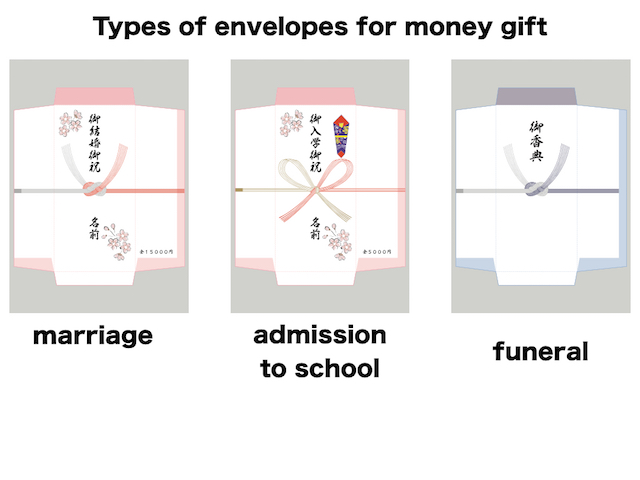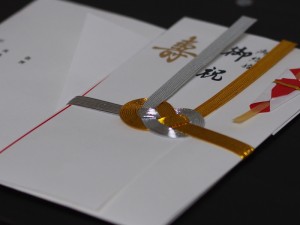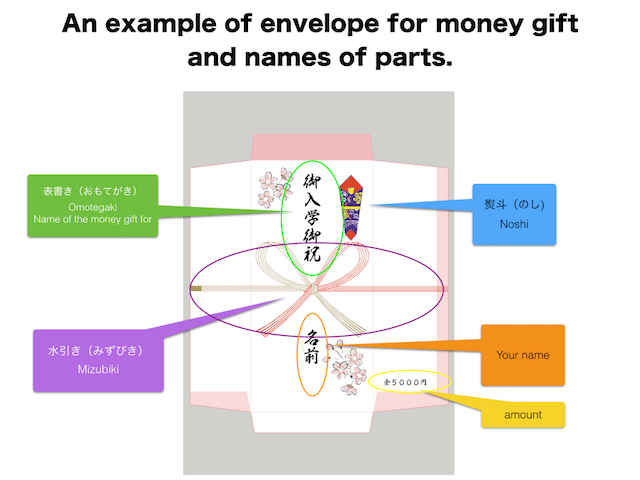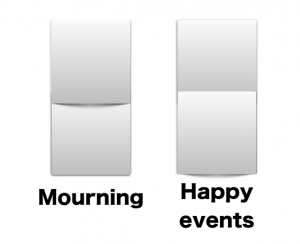Happy new year 2015. Hoping you will have a great year!!
The first blog post of 2015 is about a manner of Japanese money gift. In Oshogatsu(New year’s holidays), Money gift is very common in Japanese culture; for example, there are a money gift called “Otoshidama (New year’s money gift)” for children. In some countries, money gift is not preferred in some occasions; however, money gift is usually appropriate in certain events such as “Coming of age”, “marriage”, “funeral”, and “admissions to schools” in Japan. There are lots of events related to money gifts, but manner of money gift in Japan is not quite simple. In this post, I will explain a manner of Japanese money gift in general especially how to wrap cash in special envelopes called Goshugi-bukuro and Koden-bukuro.
Table of Contents
Goshugi-bukuro and Koden-bukuro (an envelope for presenting a gift of money)
When you hand a money gift, envelopes are very important and there are certain manners to wrap cash. The picture below explains the names and meanings of the envelopes.
These envelopes can be purchased at any convenient stores.
Types and manners of envelopes in different occasions.

There are few basic manners to wrapping gift money in each events. I will explain 5 basic rules of Japanese money gift wrapping.
1) For happy event, use red(pink) envelopes and for mourning , use grey colour envelopes.
Noshi is only used for the happy events.
For mourning, the name or title for the money gift is little complicated. If you do not know the person’s religion (most of the time in Japan), you need to use “御霊前 Goreizen“. There are several ways to write the title for different religions. Therefore, “Goreizen” would be the best way to use for mourning.
2) Mizubiki (the ribbon on the envelopes) rules
As you can see on the picture above, there are few types of the ribbon on the envelopes.
– bowknot: is used for the happy events that is preferred to happen again such as admissions to schools, birthdays.
– Awazi-musubi: is used for occasion that is not preferred to happen again such as marriage and funeral.
bowknot is able to be untied which implies the money gift are favored to be presented again, but Awazi-musubi is not able to be untied and the money is not favored to be opened again.
3) Amount you wrap for marriage
The amount you wrap for the marriage gift money is preferred to be odd numbers, especially the first or second number of the amount because even numbers are dividable; for example, 15000 and 30000 yen are preferred. Recently, 20000 yen is acceptable because 2 is “a pair” which implies the good luck for a married couple, but you might need, 10000 + 5000 + 5000 yen so that 3 bills still following the odd number rule.
4) A direction you put money
For mourning, it is preferred to put back side of bills and for happy events, put the front side of bills into the envelopes.
The side of bills can be find by the drawing of person in Japanese bills. For example, the picture below is an example of front side of Japanese 10000 yen bill.
5) A direction you fold the backside of the envelopes
For mourning, the back size of the envelope is preferred to be bottom under and top front, and for happy events vice versa as picture below.
These are the basics of Japanese money gift manner. Now, you are ready to go to special occasions with appropriate manners in Japan. Hope you only have happy events in 2015.









1 Comment
Comments are closed.